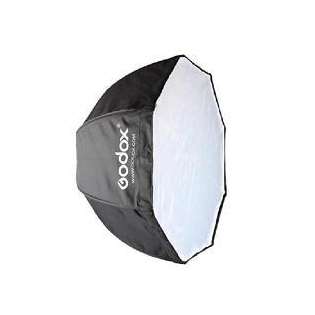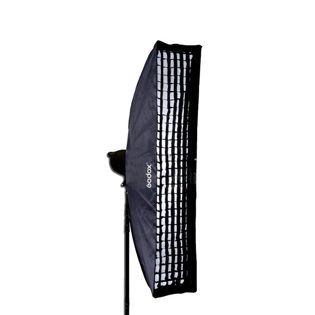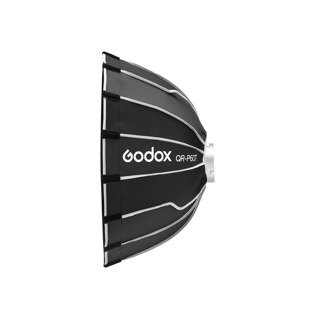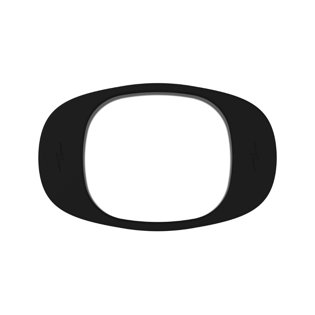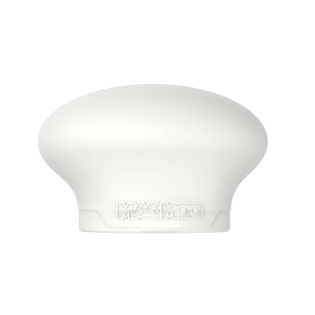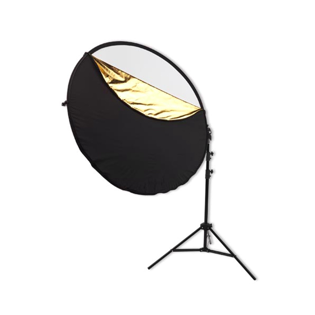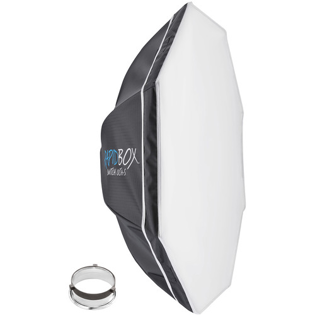
HOw to use Light Modifiers for Better Shots
There are several tools to shape and control lighting in your
photos and videos, including umbrellas, soft boxes, reflectors, grids, and
snoots. Let’s dig into what they are and how to use them.
Using Umbrellas in Photography Lighting
Umbrellas are lightweight and affordable modifiers, useful for everyone, but especially great for beginners and those looking for a budget-friendly option. They come in a number of sizes. Two main types of umbrellas for photography and video are shoot-through and reflective.
Umbrellas
Umbrellas are lightweight and affordable modifiers, useful for everyone, but especially great for beginners and those looking for a budget-friendly option. They come in various sizes. Two main types of umbrellas for photography and video are shoot-through and reflective.


Photo credit: fjwestcott.com.
When to Choose a Shoot-through Umbrella for Your Lighting Setup
Shoot-through umbrellas are usually made of an opaque white material that you can almost see through. They produce soft, diffused light that wraps around your subject, minimizing harsh shadows and creating a flattering effect. Because the light source passes through the umbrella, you can place it very close to your subject, enhancing the softness of the light.
When using a shoot-through umbrella, position your light pointing into the umbrella, firing the light through it and onto your subject. The light spreads out widely after passing through the umbrella, making it suitable for lighting a large area or multiple subjects. The even spread of light works great for portraits, group shots, and situations where uniform lighting is essential. You can also use a large shoot-through umbrella to soften the fall of harsh sunlight onto your subject.
Quick Tip
Use a shoot-through umbrella to soften overhead sunlight.
Reflective Umbrellas for High-Contrast Shots
Reflective umbrellas have a black exterior with a white or silver interior. They help you control the direction and concentration of light better. A silver interior provides a harder light compared to white.
Reflective umbrellas create more defined shadows and can add more contrast and depth to an image. Use them to illuminate backgrounds or provide fill light in a more controlled manner. You can also use diffusers and other modifiers to adjust the softness and spread of light.
Specular highlights become more pronounced when using a reflective umbrella, adding texture and dimension to your subject.
With reflective umbrellas, position the light source inwards. Instead of filtering the light through the umbrella, it reflects off the interior material, wraps around, and comes out the front onto the subject.


When to Use a Shoot-through Umbrella
- Ideal for portraits needing soft, even lighting.
- Useful in smaller spaces where the light source needs to be close to the subject.
- Great for situations requiring broad lighting coverage, such as group shots or evenly lit scenes.

When to Use a Reflective Umbrella
- Suitable for scenarios needing more control over light direction and intensity.
- Excellent for creating dramatic, contrasty images with defined shadows.
- Useful for background lighting or situations needing stronger, more focused light.
Quick tip
Look for an umbrella mount that swivels. This gives you more flexibility in where you can place and position your light. A fixed-mount umbrella stand limits your light placement options.
The Downside to Umbrellas
While umbrellas are cheaper, they make controlling light harder. The light shoots everywhere, including where you may not want it. Consider a softbox or another type of modifier as an alternative.

Enhance Your Lighting with Soft Boxes and Strip Boxes
A softbox enlarges your light source. Profoto explains in this video, “The larger the light in relation to your subject, the softer that light will be.”
A square or rectangular softbox has a more defined edge and mimics light from a window or doorway.
An octabox provides a less-defined edge, useful for shooting portraits outdoors in natural light.
A strip box with a grid helps you strictly control where light falls, ensuring it only falls on the subject.
Profoto's product expert Chris Fain talks about different types of softboxes and when to use them.

Photo credit: Anthony Jackson.
In this sample photo, photographer and videographer Anthony Jackson used a soft box off to the right, and a second hard light, which is the bright light source behind the flag, impersonating the sun.

Photo credit: Anthony Jackson.
In this portrait photo, Anthony used a softbox to the right, with a small hard light to the left that helps the subject stand out from the background.
Quick tip
Consider the shape of the reflection in your subject’s eyes when choosing a softbox for portrait photography.



Mastering Light Direction with Grids
Using a grid with a softbox helps you to control the light even more. There’s always a bit of spill around the edge of a softbox. A grid makes that light very defined by directing it where you want it. Grids are very useful in small studios or spaces where you don’t want light spilling onto the wall behind your subject.


Photo credit: Anthony Jackson.
In this sample photo by Anthony Jackson, a studio strobe and a strip box with a grid attachment strictly control the light, preventing it from falling on the wall behind the subject. You wouldn’t know the walls in this small studio are a pale cream colour! A second hard light source on the left outlines the subject’s suit so it doesn’t blend into the background.
Why Use a Grid?
- To reduce spill from a light source
- To control the light’s direction
- To control exactly where the light lands
Reflectors: A Must-Have Tool for Every Photographer
Use a reflector to redirect light onto your subject or scene and lessen shadows. Reflectors come in several colours: white, silver, and gold. The colour you choose impacts your photo.
White reflectors provide a soft, natural glow by redirecting existing lighting without changing the colour tone or intensity.
Silver reflectors gather the existing lighting and reflect it slightly brighter without impacting the colour tone or intensity.
Gold reflectors, like silver, reflect the light slightly brighter than white and introduce a warmer tone to the scene.
This photo demonstrates Westcott’s Eyelighter 3 product, showing the effect the various colour options have on your images.

Photo credit: fjwestcott.com
An example of a reflector is the Godox Beauty Dish. It’s good for working with studio strobes. The shadow fall-off is smoother, the shadows less deep, but you still get lots of detail and drama. It’s kind of a blend between a hard and soft light, depending on where you position it in relation to your subject.
Insert the speedlight through the back of the beauty dish. The light bounces off the dish, onto the plate, and out, creating a larger light source. This video from Godox shows how it works and walks you through some example setups.
A beauty dish can be used for product photography as well. Here, Anthony uses a 24-inch beauty dish. An Aputure MC LED light adds colour into the photo.
A Westcott Beauty Dish Switch is an alternative option that gives you similar light but can collapse down and fit into a tiny bag, making it easy to stow and carry for shooting on location.
The Godox Beauty Dish is cheaper, but the flexibility and portability of the Westcott Beauty Dish Switch make it worth the investment. Both options come with a diffusion sheet to soften the lighting further.

Photo credit: Anthony Jackson.
A Westcott Beauty Dish Switch is an alternative option that gives you similar light but can collapse down and fit into a tiny bag, making it easy to stow and carry for shooting on location.
The Godox Beauty Dish is cheaper, but the flexibility and portability of the Westcott Beauty Dish Switch make it worth the investment. Both options come with a diffusion sheet to soften the lighting further.
Snoots
A snoot reduces the spread of light and creates a crisp, hard beam of direct light in a round shape with no spill. Many snoots come with a honeycomb grid to further narrow the beam’s spread, so you can precisely control where the light falls on your subject or scene.

Photo credit: Godox.com
Shop Light Modifiers
Shop at Henry’s
Deciding on the type of lighting you want and the message you want to convey will help you determine the setup and gear you need. Henry’s can help you select the right gear and accessories to achieve shots you, your subjects, and your clients will love. Connect with our experienced and knowledgeable Customer Service team or in-store staff if you have any questions!
Trade In, Trade up
Trade in your old gear for something new!
Find out more about Henry’s Trade-in program
Extended Warranty
Global Coverage! Henry’s offers 2 or 3-year extended warranties on cameras and lenses.
Find out more






